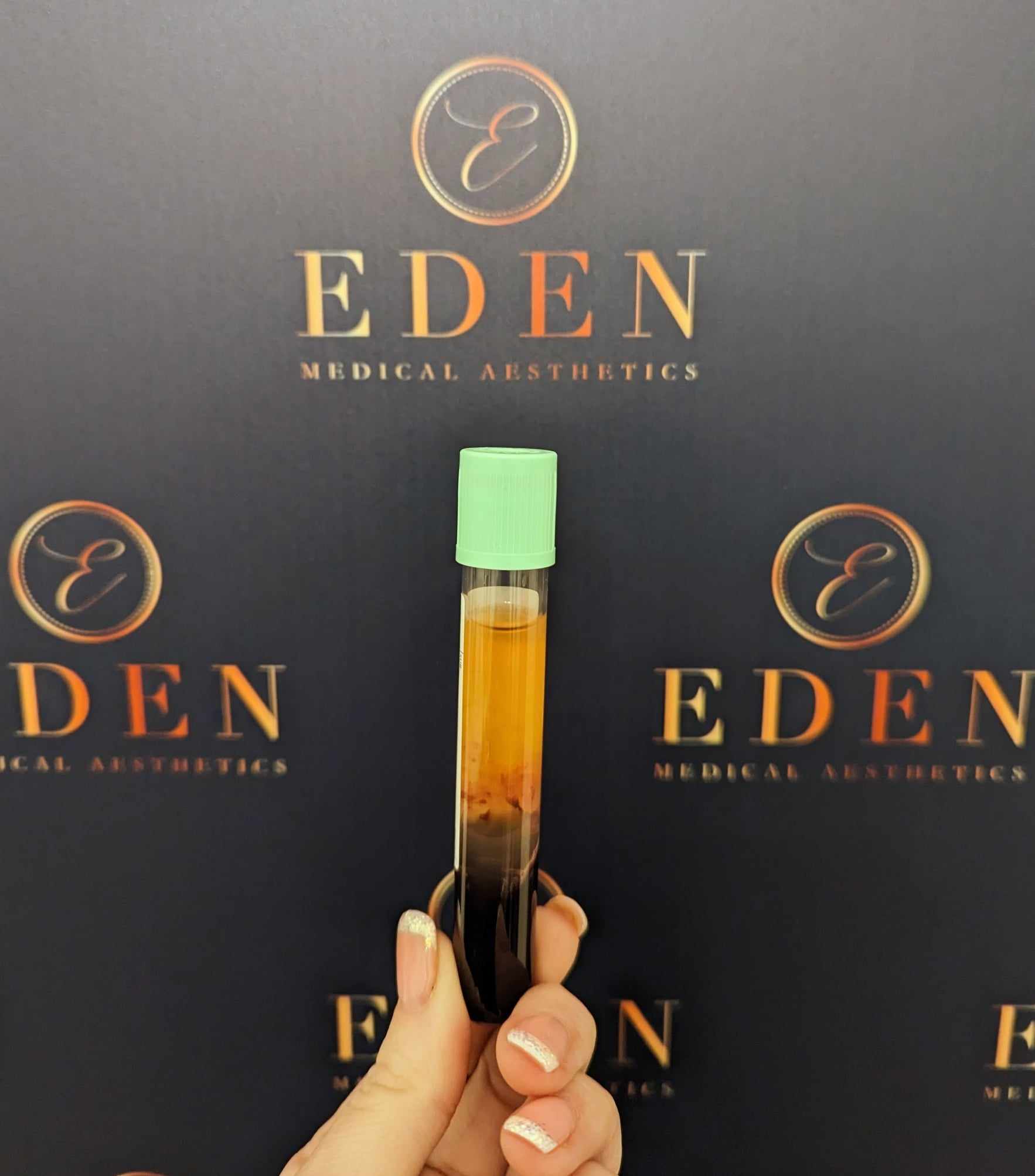Platelet Rich Plasma (PRP)
Skin Therapy
Platelet Rich Plasma therapy, also known as the vampire facial, harnesses the body’s own healing powers to stimulate new tissue growth, giving your skin a healthy, more youthful appearance. It involves taking a small amount of the patients own blood and separating the plasma from the rest of the blood components. The plasma is then injected into the area of concern where the platelets release their growth factors.

PRP improves the skin texture and tone and regenerates collagen, helping reduce wrinkles and lines, tackle blemishes, improve scarring and restores a healthy and youthful glow.
Frequently Asked Questions
What is PRP?
Platelet Rich Plasma (PRP) is an injectable treatment using the patient’s own blood. Platelets are vital in the process of tissue healing, and the growth of new cells. PRP thereby promotes collagen production, regenerates the skin tissue, and re-energizes your cells into rejuvenating themselves. The release of growth factors amplifies the healing process. PRP softens fine lines and wrinkles, tightens the skin, and improves skin tone and texture.
How is PRP administered?
The treatment of PRP involves a fraction of blood, collected or ‘drawn up’ from the individual patient into a syringe. The collected blood is then spun down in a special centrifuge to separate its components. The platelet rich plasma is then reinjected, and/or micro-needled back into the skin.
How long does a PRP treatment take?
Typically, a PRP treatment takes between an hour or two to complete. This depends on if the PRP is administered through injections only, and/or micro-needled into the skin. This timeframe includes an additional 30 minutes for the blood to be drawn and spun in the centrifuge, and topical numbing to be applied.
Do PRP injections hurt?
The needles used to inject PRP are very small; however, some mild discomfort may be felt while the PRP is being reinjected. The sensation typically felt is a tingling sensation. This sensation only lasts a few minutes after the PRP is injected. We ensure our patients are comfortable throughout the entire PRP treatment and apply topical numbing cream and ice to aid any discomfort.
When will I begin to see results from a PRP treatment?
Generally, patients notice tightening and a more even tone to their skin in a week or two after PRP injections. These results continue to build for up to 6 months after treatment.
How long do results from PRP injections last?
Results from PRP injections can be seen for many years after treatment. However, these results vary due to the individual’s natural variation in quality of Platelet Rich Plasma, as well as their lifestyle. While we cannot stop the aging process, we can slow it down. Results from PRP injections can be extended with proper at-home skincare maintenance.
What areas can I treat with PRP injections?
Technically, PRP can be used to treat any area of the body. For cosmetic purposes, PRP is most popularly used to treat the face and neck/decolletage.
Is there any downtime associated with PRP?
There is no downtime associated with PRP injections. However, after your treatment, your skin may be red. This is normal and to be expected. Redness usually lasts from one to 24 hours. You may also have a little swelling in some areas. Due to this, some patients like to be treated towards the end of the week, so they have the weekend to recover. Healing time varies from patient to patient. Healing may take longer if PRP injections are paired with micro-needling.
How many PRP treatments will I need?
Results can be seen after one treatment, but the exact number of treatments needed varies from patient to patient. Generally 2‐3 treatments are advised, but more may be indicated for some individuals.
Are there any side effects or possible risks to PRP injections?
PRP used for aesthetic procedures are safe for most individuals. There are very few contraindications with PRP injections. The most common side effects associated with PRP injections are mild to moderate swelling and redness.
Who is NOT a candidate for PRP injections?
During your consultation, an assessment will be required to ensure you are the right candidate for
PRP injections. Patients with certain health conditions are not a candidate for PRP injections.
Patients who are pregnant are not candidates for PRP injections.
Aftercare Advice
The following aftercare advice is essential to help reduce the risk of treatment
complications, to improve your comfort/healing and to help achieve the best possible
results from your treatment:
Please follow the aftercare advice for Platelet Rich Plasma therapy:
• Do not touch your skin for at least 6 hours. Allow the plasma to remain on your skin
so that it continues to work.
• You can wash your face the next morning with lukewarm water but avoid using
cleansers that can cause damage. Wash your hands with soap before touching the skin.
• Dry carefully, being especially careful not to rub the skin. You may feel that the skin
is firmer than usual. However, over the next few days to 2 weeks it will soften and feel
soft and smooth again.
• Use ice to relieve swelling but ensure a thin cloth is placed between the pack and
your skin. Avoid direct contact and schedule applications at 5-minute intervals.
• Sleep with your head elevated on your back for the next 2 days. This will help reduce
swelling and bruising.
• As part of your facial care, do not use exfoliants or other harsh products on your skin
for at least 72 hours. However, you can use a non-chemical organic cream such as Serum
for PRP, which is gentle and can even be combined with your own plasma.
*The effect of the PRP treatment can last for 10 to 12 months if you follow the aftercare advice
carefully.
Cost of PRP Skin Therapy
One session typically costs £160 – price can vary depending on size of treatment area. Price will be provided on consultation.